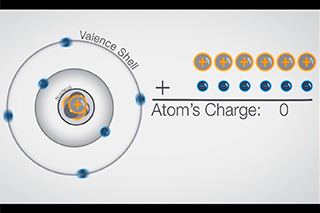News & Events
Research
Check Out Our Latest ALERT 101 Video March 31, 2017
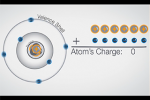
ALERT 101: The Basics – Atoms and Molecules
The prequel to ALERT 101 – Methods of Chemical Characterization and Mitigation, ALERT 101 – The Basics: Atoms and Molecules, provides an introduction to atoms and molecules. This video describes the structure of atoms, basic behaviors and properties of atoms, and how atoms bond to form molecules. Different methods of molecule identification are also discussed.
For users without YouTube access: ALERT 101 – The Basics: Atoms and Molecules
Inspired by the success of TED (www.ted.com) and other educational media forums, ALERT has developed the ALERT 101 video series. Each video short features different technologies and research areas that the ALERT Center engages in. We hope that these productions help educate and inform the global community on these topics in an accessible and enjoyable way
This material is based upon work supported by the U.S. Department of Homeland Security, Science and Technology Directorate, Office of University Programs, under Grant Award 2013-ST-061-ED0001. The views and conclusions contained in this video are those of the authors and should not be interpreted as necessarily representing the official policies, either expressed or implied, of the U.S. Department of Homeland Security.
Faculty Spotlight: Joel Greenberg March 31, 2017

Dr. Joel Greenberg, an Assistant Research Professor in the Department of Electrical and Computer Engineering at Duke University, is one of the newest ALERT researchers. He is leading Project R1-C.3, “Characterizing, Modeling, and Mitigating Texturing in X-Ray Diffraction Tomography,” a newly funded research project that kicked off in January, 2017. His research lab is made up of one Ph.D. student, two master’s students, and two undergraduates.
Dr. Greenberg’s background is in multiple fields, as he received his bachelor’s degree in Mechanical and Aerospace Engineering along with a certificate in Physics at Princeton University in 2005. He then received his A.M. and Ph.D. in Physics, as well as a graduate certificate in Photonics, from Duke University in 2012. When asked how he became interested in homeland security related research, he states, “After my Ph.D., I was the technical and project manager for the DHS Science and Technology Coded Aperture X-ray Imaging (CAXI) program, which was tasked with studying how new advances in hardware and software, and algorithms could impact and improve the detection of contraband in luggage. Since that time, I have had the privilege of becoming even more involved in the world of security-related technology development, which contains a fascinating intersection of academia, government, and industry.”
Concerning major research questions in the field, Dr. Greenberg is very interested in addressing the limits of X-ray based explosives sensing. He is passionate about responding to real-world problems, and states that, “Because there is a cost and benefit to every measurement made, performing sensing in an optimal way requires an understanding of the underlying physics, available technologies, and algorithmic approaches. Getting the most useful information out of a set of measurements is key in the current data-deluged world of today.”
Dr. Greenberg is involved in numerous projects beyond his work with ALERT. His work with the Department of Homeland Security involves research testing next-generation X-ray diffraction tomography scanners and information theoretic analyses of X-ray-based detection systems. He is also working with radiologists and physicians at Duke University to develop devices based on X-ray diffraction that can aid in cancer detection research.
ALERT Research Highlights March 31, 2017
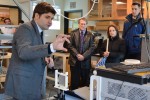
March 31, 2017
ALERT Thrust R3 Project Investigators, Dr. Carey Rappaport and Dr. Jose Martinez-Lorenzo of Northeastern University were awarded a patent for “Signal Processing Methods and Systems for Explosives Detection and Identification Using Electromagnetic Radiation” (U.S. Patent 9,575,045) on February 21, 2017. This patent is for an algorithm designed to rule out non-explosive concealed foreign objects concealed under clothing and affixed to the skin, reducing the number of false alarms, and thus, the number of pat-downs needed, leading to greater accuracy in threat detection and shorter security lines. The improved reliability would benefit many: passengers, airlines, and the Transportation Security Administration; and possibly lead to the expansion of AIT Millimeter Wave Scanners into everyday use, such as railway stations, sporting venues, and other soft targets. Read more about their research here.
Dr. Rappaport was recently selected by the IEEE Antennas and Propagation Society (AP-S) as a Distinguished Lecturer for 2017-2019. The IEEE AP-S Distinguished Lecturer Program sends experts, the Distinguished Lecturers, to visit active AP-S Chapters around the world and give talks on topics of interest and importance to the Antennas and Propagation community. Read more here.
Dr. Martinez-Lorenzo was recently awarded a $500K National Science Foundation (NSF) CAREER Award for his work on developing a method for “4D mm-Wave Compressive Sensing and Imaging at One Thousand Volumetric Frames per Second.” Millimeter-wave sensing and imaging systems are generally used for a wide range of applications, such as security monitoring to detect potential threats at the airport and biological imaging for wound diagnosis and healing. Because this is the first four-dimensional millimeter-wave imaging system that can operate in quick-changing scenarios, it will benefit society greatly. Read more about how Dr. Martinez plans to use this award here.
ALERT Thrust R2 Project Investigator, Dr. Steve Beaudoin of Purdue University was recently awarded “Best Presentation” in his session for a paper he presented on at the Annual AlChE Meeting in November 2016. The paper was based on his research project that was recently selected as a new ALERT project. The new project, titled “A Novel Method for Evaluating the Adhesion of Explosives Residue,” aims to provide insight into the reasons why explosives residues stick to surfaces and what must be done to effectively detect those residues in air transportation security environments. Read more about Dr. Beaudoin’s research here.
Prof. Rappaport and Prof. Martinez-Lorenzo Present ALERT Research at EuCAP 2017 March 24, 2017
Dr. Carey Rappaport and Dr. Jose Martinez-Lorenzo of Northeastern University presented ALERT-related research at the 11th European Conference on Antennas and Propagation (EuCAP 2017) in Paris, France this week (March, 19-24, 2017). EuCAP 2017 is organized by the European Association on Antennas and Propagation (EurAAP), and since 2006, this major event has been bringing experts from academia, research centers, and industry together.
Dr. Rappaport presented a paper entitled, “Modeling the Response of Dielectric Slabs on Ground Planes Using CW Focused Millimeter Waves,” which he co-authored with researcher, Dr. Ann Morgenthaler, and ALERT students, Mahdiar Sadeghi and Elizabeth Wig. In this paper, the researchers present a novel non-iterative model based on ray analysis to characterize non-metallic, weak dielectric objects (like threat objects) on the surface of a highly conducting background (like the human body) using a focused continuous millimeter-wave sensor.
Dr. Martinez-Lorenzo presented a paper entitled, “High Capacity Imaging Using an Array of Compressive Reflector Antennas,” which he co-authored with ALERT students, Ali Molaei and Galia Ghazi, and researchers, Dr. Hipolito Gomez-Sousa and Dr. Juan Heredia-Juesas. In this paper, the authors propose to use an array of six compressive reflector antennas (CRAs), in order to be able to image an extended human-size region. A CRA is created by distorting the surface of a traditional parabolic reflector antenna. As a result of using CRAs, pseudo-random spatial codes are created at the imaging region. Because these spatial codes increase the information collected by each measurement, a smaller number of measurements are needed, which translates into less imaging time. Additionally, the electromagnetic cross-coupling between adjacent CRAs is used to enhance the sensing capacity of the system, as well as to extend the region that it can image. Current security checkpoints use a pause and pose sensing approach for passengers, and require divestment and recollection of passengers’ possessions. This results in a slow throughput in the overall system, and long lines at security check-points. In the presented work, the researchers have developed a fast, fully electronic system that will not require a pause and pose approach, resulting in quick and accurate screening of passengers and their belongings.
Professor Jose Martinez-Lorenzo Awarded $500K NSF CAREER Award March 6, 2017

ALERT Thrust R3 Project Investigator, Professor Jose Martinez-Lorenzo of Northeastern University was recently awarded a $500K National Science Foundation (NSF) CAREER Award for his work on developing a method for “4D mm-Wave Compressive Sensing and Imaging at One Thousand Volumetric Frames per Second.” Millimeter-wave sensing and imaging systems are generally used for a wide range of applications, such as security monitoring to detect potential threats at the airport and biological imaging for wound diagnosis and healing. Because this is the first four-dimensional millimeter-wave imaging system that can operate in quick-changing scenarios, it will benefit society greatly.
One of the main applications of this system is finding security threats hidden under clothing, inside backpacks, or in public spaces, such as sports arenas. The system can scan multiple people within 26 cubic meters and produce 1000 3D image frames per second. This far surpasses existing millimeter-wave sensing and imaging systems.
Despite the efficiency of this system, there are still some challenges to overcome. This project will look to address these challenges and ideally, the results of this research will establish the scientific basis for the proposed new sensing and imaging systems, by enhancing the imaging performance, reliability, and efficiency while reducing the hardware complexity, overall cost, and energy consumption of the system.
Additionally, Professor Martinez-Lorenzo will develop an educational program that combines classroom learning with research training methods to help students understand the principles and limitations of wave-based imaging. This educational program will also collaborate with the Northeastern University Cooperative Education and Career Development Program to transition students into industry and the Northeastern University Center for STEM Education to provide valuable research experiences for K-12, undergraduate, and underrepresented students, as well as education through online materials and public venues.
ALERT’s Methods to Improve the Detection of Hidden Explosives Wins Patent March 3, 2017
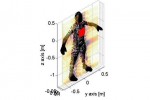
ALERT researchers, Prof. Carey Rappaport and Prof. Jose Martinez-Lorenzo of Northeastern University were awarded a patent for “Signal Processing Methods and Systems for Explosives Detection and Identification Using Electromagnetic Radiation” (U.S. Patent 9,575,045) on February 21, 2017.
This patent is for an algorithm designed to rule out non-explosive concealed foreign objects affixed to the skin (i.e. hidden under clothing). Current security screening systems, such as AIT Millimeter Wave Scanners used at airports to scan passengers, are able to identify items with distinct shapes that are hidden on the body, such as guns and knives. However, explosives are considerably more difficult to identify in this manner, due to the fact that the size and shape of explosives can vary greatly, leading to time-consuming and potentially dangerous security pat-downs to determine if a suspicious object is a security threat, or a wallet that a passenger forgot to place in the bin.
Prof. Rappaport and Prof. Martinez-Lorenzo believe their algorithm, when plugged into existing screening systems, will greatly reduce the number of false alarms, and thus, the number of pat-downs needed, leading to greater accuracy in threat detection and shorter security lines. The improved reliability would benefit many: passengers, airlines, and the Transportation Security Administration; and possibly lead to the expansion of AIT Millimeter Wave Scanners into everyday use, such as railway stations, sporting venues, and other soft targets.
Image caption: Simulation of a human form with explosives slab affixed to chest.
Developing a Next Generation Screening System to Keep First Responders Safe, and People in Motion November 1, 2016
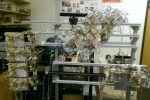
ALERT is working on developing the first inexpensive, high resolution millimeter-wave radar (mm-wave) system for the purpose of detecting and identifying potential suicide bombers in motion and at a safe distance. Current millimeter-wave imaging systems for security screening require people to stop and stand in front of the scanning system. The International Air Transport Association (IATA) has identified that being able to detect security threats without interrupting the motion of the person under test will be one of the most valuable features of the next generation personnel screening systems [Checkpoint of the Future Roadmap 2020, now Smart Security].
Professors Carey Rappaport and Jose Martinez are leading a team that wants to make that feature a reality. ALERT’s mm-wave radar system uses multiple radar sensors simultaneously. By coordinating transmitters and receivers from both sides of a walkway, the full picture of a subject moving between them is formed. At present, mm-wave radar is the only modality that can both penetrate and sense beneath clothing as far as 50 meters away.
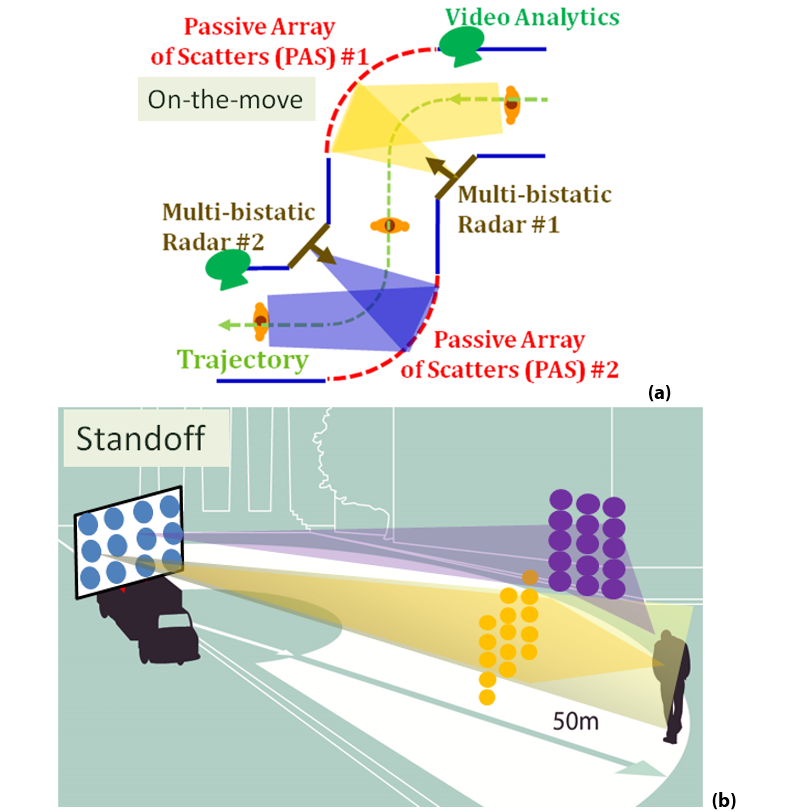
General sketch of the inexpensive, high-resolution radar system used for detecting security threats (a) at mid-ranges using an “on-the-move” configuration, and (b) at standoff-ranges using a “van-based” configuration.
The high resolution mm-wave radar system has two configurations. The first configuration, “on-the-move,” will be able to distinguish security threats hidden on individuals at mid-ranges (2-10 meters) even when those individuals are in motion. The second “van-based” configuration of the system would be able to make detections at stand-off ranges (10-40 meters). The system is non-invasive, provides minimally-disruptive scanning with quality imaging and a fast data collection time of less than 10ms. ALERT’s system would also be the first radar system that is capable of functioning at multiple ranges for both indoor and outdoor scenarios
One of ALERT’s Industrial Members, HXI Inc., has been collaborating with our research team on this technology. Together, HXI and ALERT have designed, fabricated, integrated, and validated the radar system. ALERT expects that after the assembling the first Gen-3 prototype, the partnership will transition the technology to the millimeter-wave imaging market. Additionally, new low-cost miniaturized modules are being developed by HXI for the next generation mm-wave system.
To learn more about ALERT and the Development of “Stand-off” & “On-the-Move” Detection of Security Threats, contact ALERT at [email protected] or read more on the project’s page.
Caption: (Image Above Right) Gen-2 mm-wave radar system. The transmitting vertical array is shown on the left of the image, while the receiving horizontal array is shown on the right.
ADSA14 Presentations Now Available October 31, 2016
We are pleased to announce that the ADSA14 Workshop presentations are now available for download. View all slides, as well as the reports from past ADSA workshops here.
If you have any questions regarding the topics and technologies discussed at the workshop, please contact Carl Crawford at [email protected].
ALERT Phase 2 Year 3 Annual Report Available Online! September 30, 2016

ALERT is proud to announce that the Phase 2 Year 3 Annual Report is now available for download online. This report details the continued research in ALERT’s four thrusts:
- R1 Characterization & Elimination of Illicit Explosives
- R2 Trace & Vapor Sensors
- R3 Bulk Sensors & Sensor Systems
- R4 Video Analytics & Signature Analysis
A full bibliography of publications and presentations conducted under ALERT support follows the individual project reports. Comprehensive descriptions of the Year 3 activities that took place in our Research and Transition, Education, Strategic Studies, Safety, and Information Protection Programs, as well as the ALERT Phase 2 Overview and Year 3 Highlights, Infrastructure and Evaluation, and Industrial/Practitioner and Government Partnerships can also be accessed in the Annual Report.
ALERT’s work in Improving Security Screening featured in IEEE Antennas & Propagation Magazine September 19, 2016

ALERT Bulk Sensors & Sensor Systems Thrust Leader Professor Carey Rappaport and ALERT Researcher Assistant Professor Jose Martinez Lorenzo’s article on Improving Security Screening: A Comparison of Multistatic Radar Configurations for Human Body Imaging was one of four featured articles in the August issue of IEEE Antennas & Propagation Magazine. The four articles in this issue focused on “various concepts that could enhance future imaging scenarios” and asks the question, “…is it possible to combine all of these ideas into a next-generation advanced imaging system for security and other applications?”.
The article presents the use of a fully multistatic millimeter wave radar system. The radar can be used for imaging concealed objects on the human body at airport security checkpoints with increased speed and accuracy.

